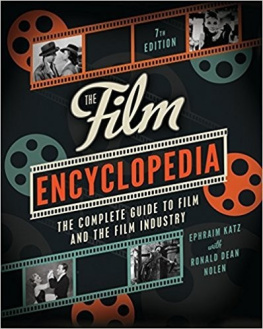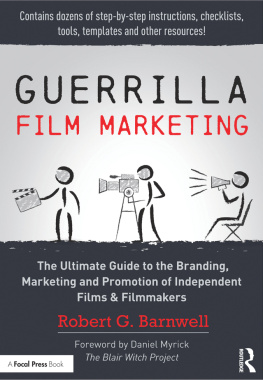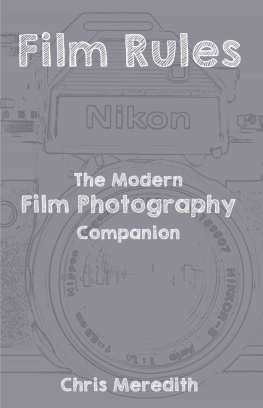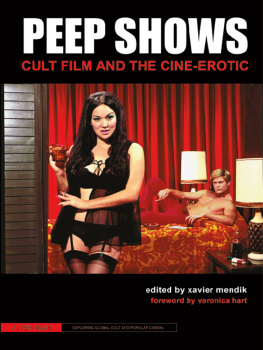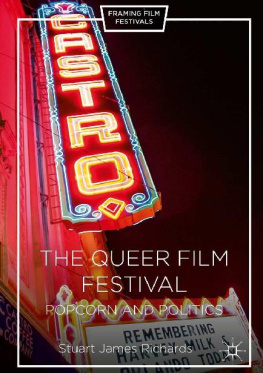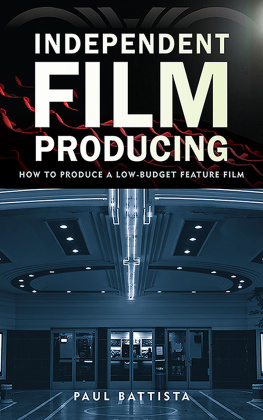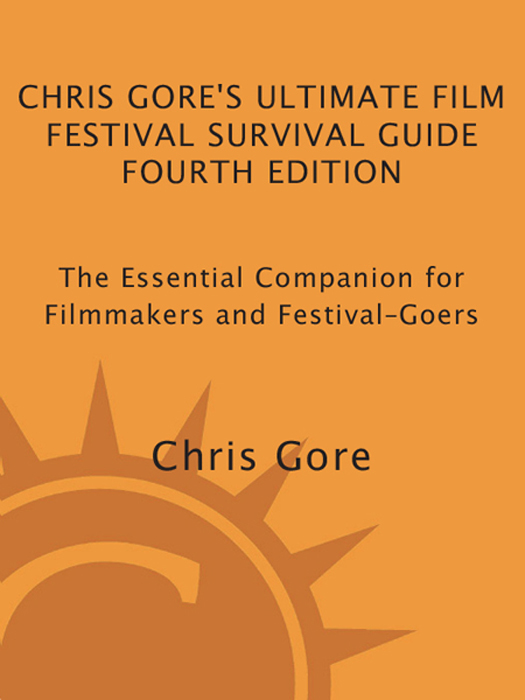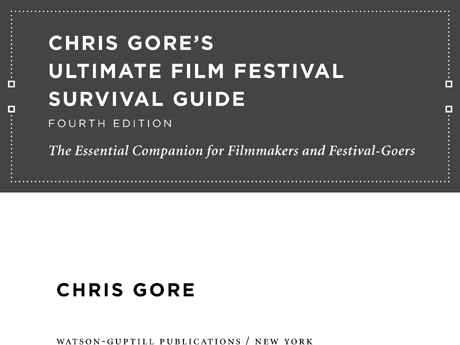CONTENTS
SECTION 1
GETTING INTO FILM FESTIVALS
SECTION 2
BUILD BUZZ: SECRETS OF INDIE MOVIE MARKETING
SECTION 3
FORMING A FESTIVAL STRATEGY
SECTION 4
FROM THE FRONT LINES OF FILMMAKING
Id like to dedicate this book to those aspiring filmmakers who forge ahead in spite of insurmountable obstacles.
You may be confronted with looming deadlines, lack of sleep, little money, waning light, and a cranky crew yet you do it anyway. Your reward is the indescribable high that comes from seeing an appreciative audience moved to laughter, tears, and applause by your movie. Without your struggle to make uncompromising films, there wouldnt be any festivals. Thank you for your storiesthe ones you share with us through film and those behind-the-scenes battles that inspire us.
To those filmmakers, enjoy the journey, but always remember be realistic about your dreams, and never quit.
SPECIAL THANKS
Thanks to the various film festival staffs for their assistanceyou made this book possible. I wish there were space here to name you all. I certainly owe you each a drink, even if its at the cash bar and I have to open my wallet.
A special thanks to all of the interview subjects for their candor and allowing their stories to serve as case studies for the filmmakers of the future. Youve done a great service to the film community by being so honest and sharing information so freely. I hope this starts a trend.
Thanks to all the hardworking folks at Watson-Guptill and Random House: Victoria Craven, Bob Nirkind, Gary Sunshine, Amy Vinchesi, and so many others who have gone above and beyond to make this the best possible edition of the book.
The dedicated writers at FilmThreat.com have my endless gratitude for their passionate coverage of festivals and for championing movies that take risks. To the readers of Film Threat, thank you for your support and for understanding that a healthy moviegoers diet should consist of more than whats being served at the multiplex so please keep reading and feeding your minds.
And finally, Id especially like to thank my friend Mark Bell, who deserves a standing ovation. He spent countless hours collecting festival database information as well as offering advice and support. I cannot thank Mark enough, not only for working so tirelessly but for being a once-in-a-lifetime friend.
Thanks to you all you will always have my respect, my gratitude, and my love.
First things first: You have to really want this. No one whos on the fence about being a filmmaker ever succeeds.
HEIDI VAN LIER,
writer/director of Monday
INDEPENDENT FILM
TRANSCENDS THE TRENDS
Independent film is dead. You might have heard this. Its kind of the trendy thing to say now.
The imminent demise of indies has been declared by movie reviewers, argued by experts on film festival panels, and even been announced as cleverly written obituaries by bloggers. The folks who loudly make this bleak diagnosis always seem to forget one very important thing: People are still making movies, and they are making a lot of them. Whether new movies are uploaded to the Web, screened at festivals, or find distribution elsewhere, this death notice has yet to reach all the filmmakers too consumed in their projects to worry about what the so-called experts say. In fact, a record 8,700 films were submitted to the 2009 Sundance Film Festival. Clearly there are new voices out there waiting to be discovered, and nothing is standing in their way.

Main Street in Park City, Utah, during Sundance
Hard economic times may affect films released through traditional distribution outlets, but when have indies ever had it easy? Woeful economic realities have always gone hand-in-hand with independent film. I cant pinpoint a moment in film history when money was not a dilemma facing indie filmmakers who hoped to get their projects off the ground. Fortunately, technology has made it possible to deliver a slick, skillfully made movie for, well, really cheap. A smart filmmaker, when asked about the budget he requires, will often respond with, How much do you have?
There is no correlation between dollars spent and quality. Ive seen indies made for $10 million or $10,000 and the only thing that mattered was how effectively the filmmaker engaged the audience with his vision. Money is irrelevant in the realm of creativity. Individuals committed to telling their stories by any means necessary will always find a way. Ultimately, independent filmmakers are immune to a struggling economy since they are always struggling anyway.
Those new to the business realize fast that the film industry has an insatiable appetite for speculation, especially the kind of information that pinpoints and predicts trends. Ive written about many trends myself, and some of my recent favorites include: Teens prefer to watch movies on their computers, rather than go to the movies. Its true, according to some. The audience that goes to the movies is shrinking. Its a fact. Digital downloads will replace DVDs as the way people watch movies in their homes. That is likely to happen. Certainly downloaded movies are being viewed by a growing audience. At their height in the 1960s, there were 4,000 drive-in movie theaters across America; now there are just 200. Sure, habits change, but the death of the drive-in theater did not result in the death of the movies, just a shift in how people viewed them.

The author with Sundance founder Robert Redford
Thanks to the tremendous growth of film festivals (about 400% over the last decade), a whole new audience of moviegoers exists. These film festival fans have discovered a taste for the kind of renegade cinema that can only be served up by independents. And they enjoy being challenged as much as they like to be entertained. A festival-goer quickly learns to love the surprise that comes with experiencing a movie that has not been tainted by oversaturated marketing or trailers that give away the entire story. A sold-out premiere followed by a lively festival question-and-answer session along with a wild post-screening party will bring that festival-goer back next year. Once festival virgins have seen a movie at a decent fest, they always come back. With their eyes opened to a whole new world of movies, those festival converts develop a passion that can be satisfied with indies on DVD, cable, or downloads while they plan their escape to the next fest.
Now, I dont see how its possible that independent film could be on the wane while festivals continue to expand and their audiences grow. And there clearly is no shortage of filmmakers struggling to make movies to present to that audience. These visionaries do not make sacrifices to fill a slot in a studios schedule or to make a blockbuster summer movie or a franchise sequel or even to make moneythey sacrifice because they have to. Fueling their efforts is the need to communicate free of financial concerns something important about the human experience to an appreciative audience.








